The Cave of Forgotten Dreams: The World of Martina Berther

Kit Records label boss Richard Greenan reflects on Swiss bassist Martina Berther’s solo debut, ‘Bass Works: As I Venture Into’, through the lens of prehistoric paintings and sculptures.
Situated somewhere between Éliane Radigue, Mica Levi & Olivier Messiaen, ‘Bass Works: As I Venture Into’ is described as an album of “lush drones, elegiac soundscapes & alien music, opening up strange, beautiful new worlds of solitude & wonder”.
Venture into the ancient resonances of these adventurous, enigmatic yet utterly spellbinding works below.

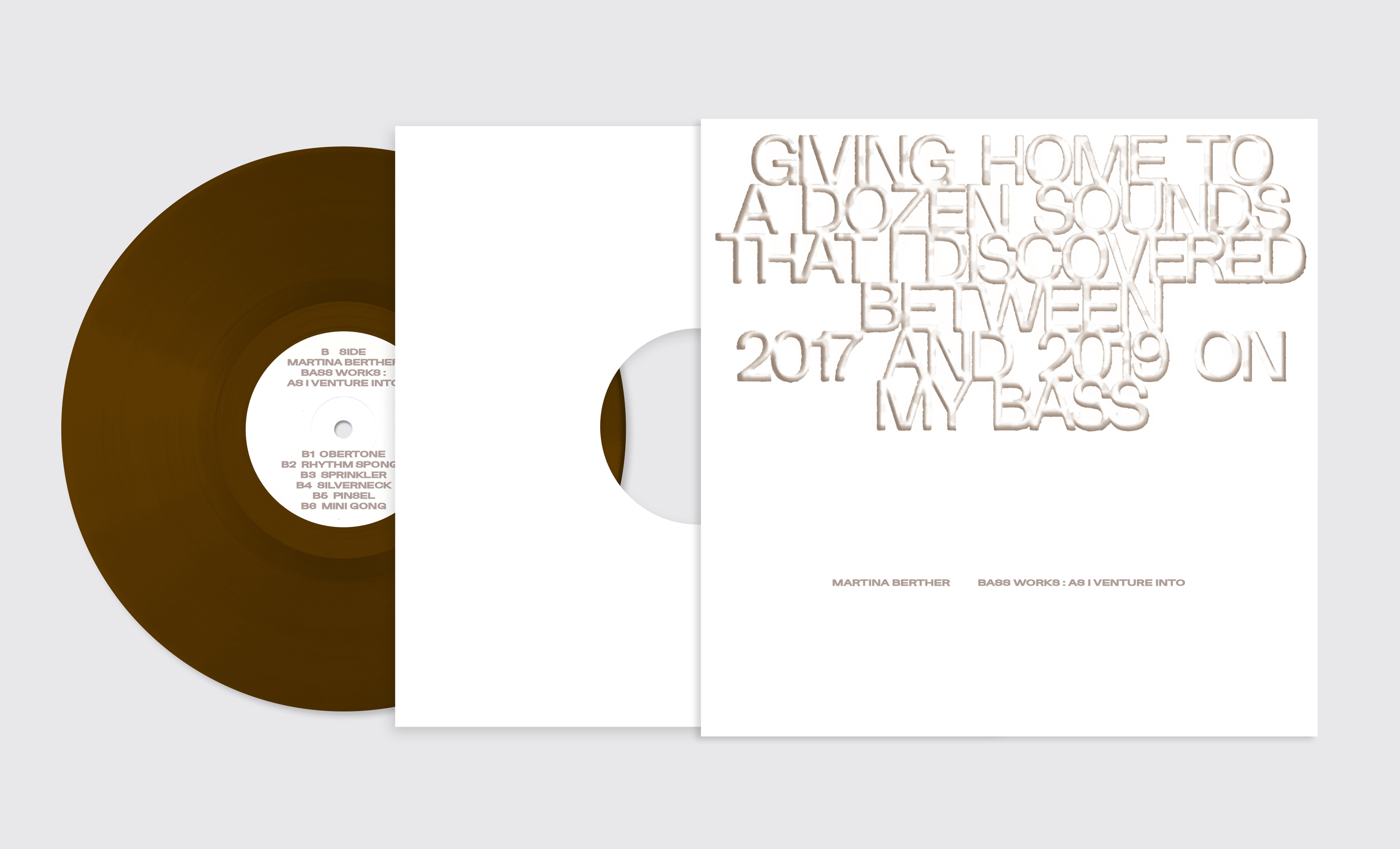
1. 6Chords | The Cave of El Castillo
‘6Chords’ is the entry point for Martina’s record, and was my first exposure to her work. The zero-gravity otherworldliness of the piece instantly grabbed me. I’m always reminded of Messiaen’s unpredictable, alien music – it seems to hover, calibrating itself before lowering into a strange new landscape.
Very old cave paintings often give that feeling of first contact – hands grasping in the dark to make sense of the world’s contours, plants and animals. The Cave of El Castillo, in Spain, contains the world’s oldest known cave painting: a large red stippled disc. The hand stencils, according to a finger length ratio study, are mostly female. Uranium-thorium dating has placed the work at over 40,000 years old.
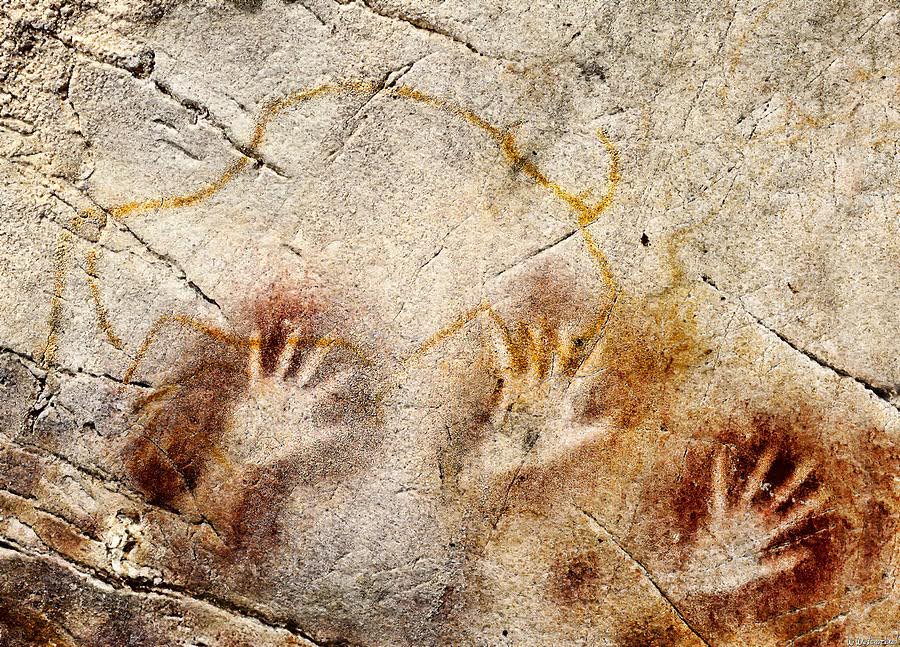
2. Alienruf I | The Venus of Monruz
How did she make this? I have no idea. To me it evokes ancient technology whirring into life after several millennia gathering oxidation and moss.
The Venus of Monruz, a pendant carved from jet, resembles the stylized reclining forms of Henry Moore. It dates back to the late Upper Paleolithic age, some 11,000 years ago, and was discovered in 1991 during the construction of the Swiss N5 highway.
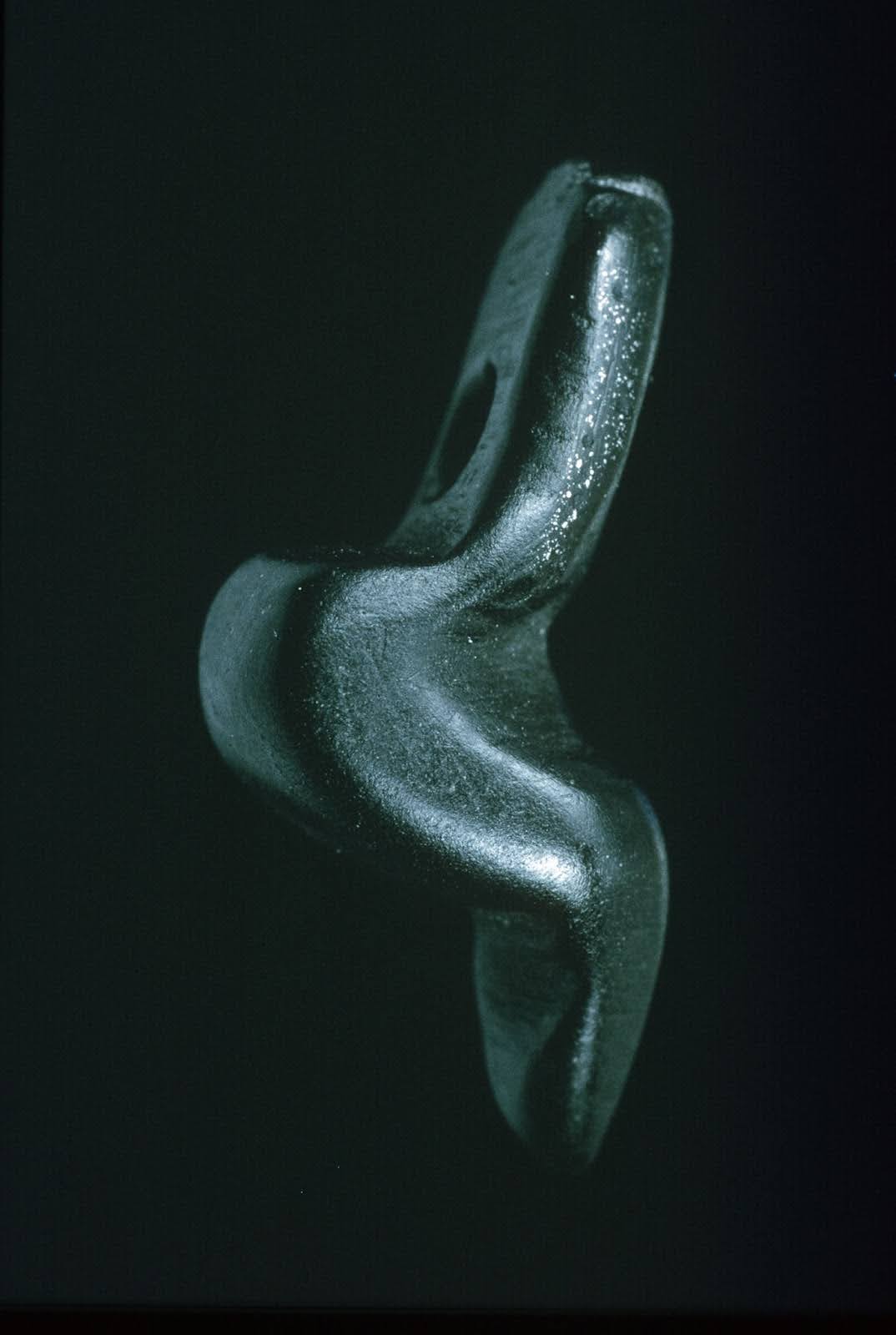
3. Cymbal | Löwenmensch
It would have been hard to guess how Martina brought together cymbal and strings on this piece, without seeing the accompanying video. A prickling cascade of tones carved out in her lap, like spices ground together in a mortar.
The portmanteau of disparate objects and forms, animal and human, found the name zoomorphism in ancient Greece. The earliest example of this species-bending art is the Löwenmensch (or ‘Lion-man’), an ivory carving discovered in a German cave in 1939. It is carbon-dated at between 35,000 and 41,000 years old.
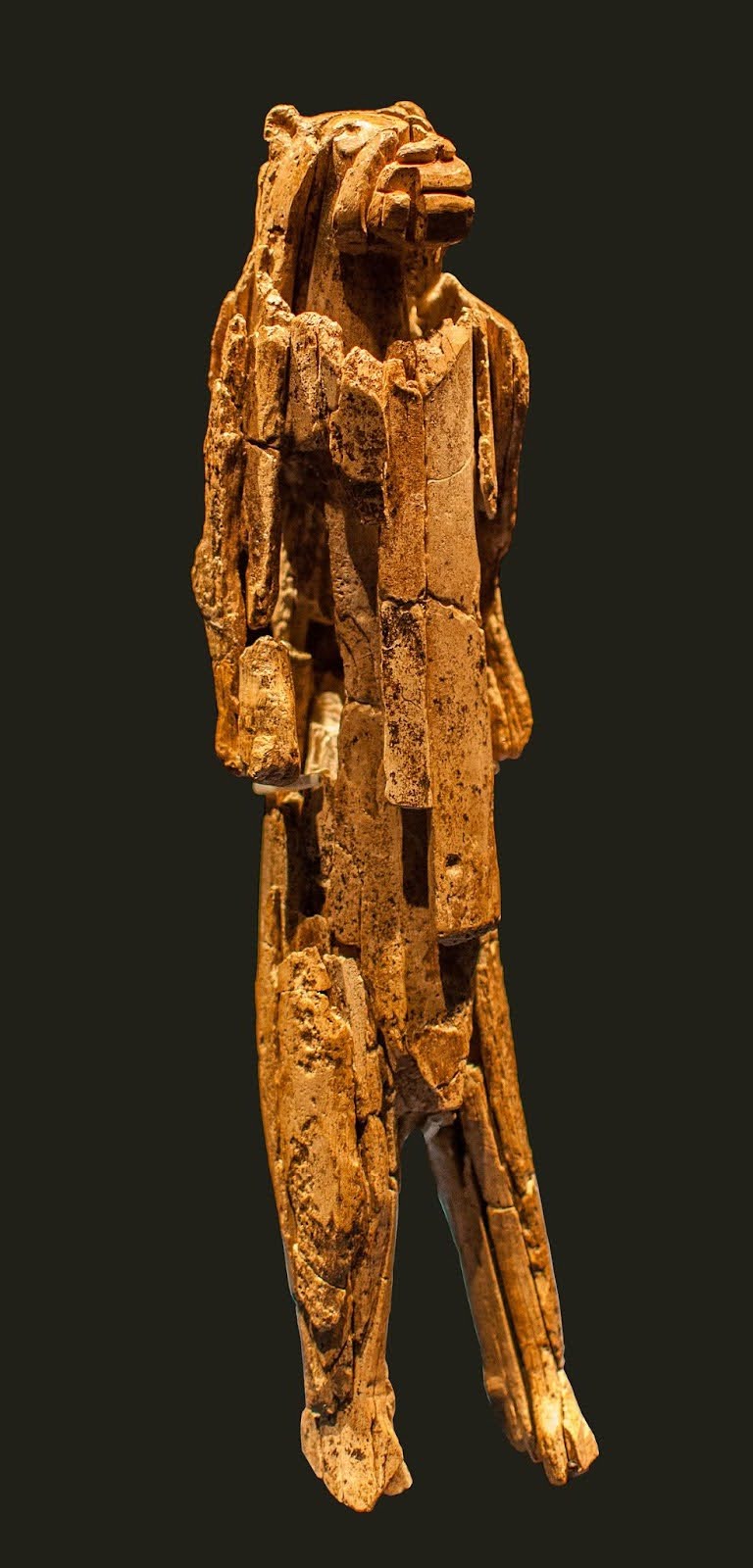
4. Bow | Bison Licking Insect Bite
Unmistakably an animal call, ‘Bow’ could be uttered by a mournful buffalo or stag. This call is eked out with a bow of the horsehair variety, as opposed to the twangy hunting one.
Bison Licking Insect Bite is a small ornament carved from a single reindeer antler. It was found at Abri de la Madeleine, France, and measures 10.5cm in length. It has been carbon-dated at around 15,000 years old, and the pesky wasp depicted in the carving is now extinct.
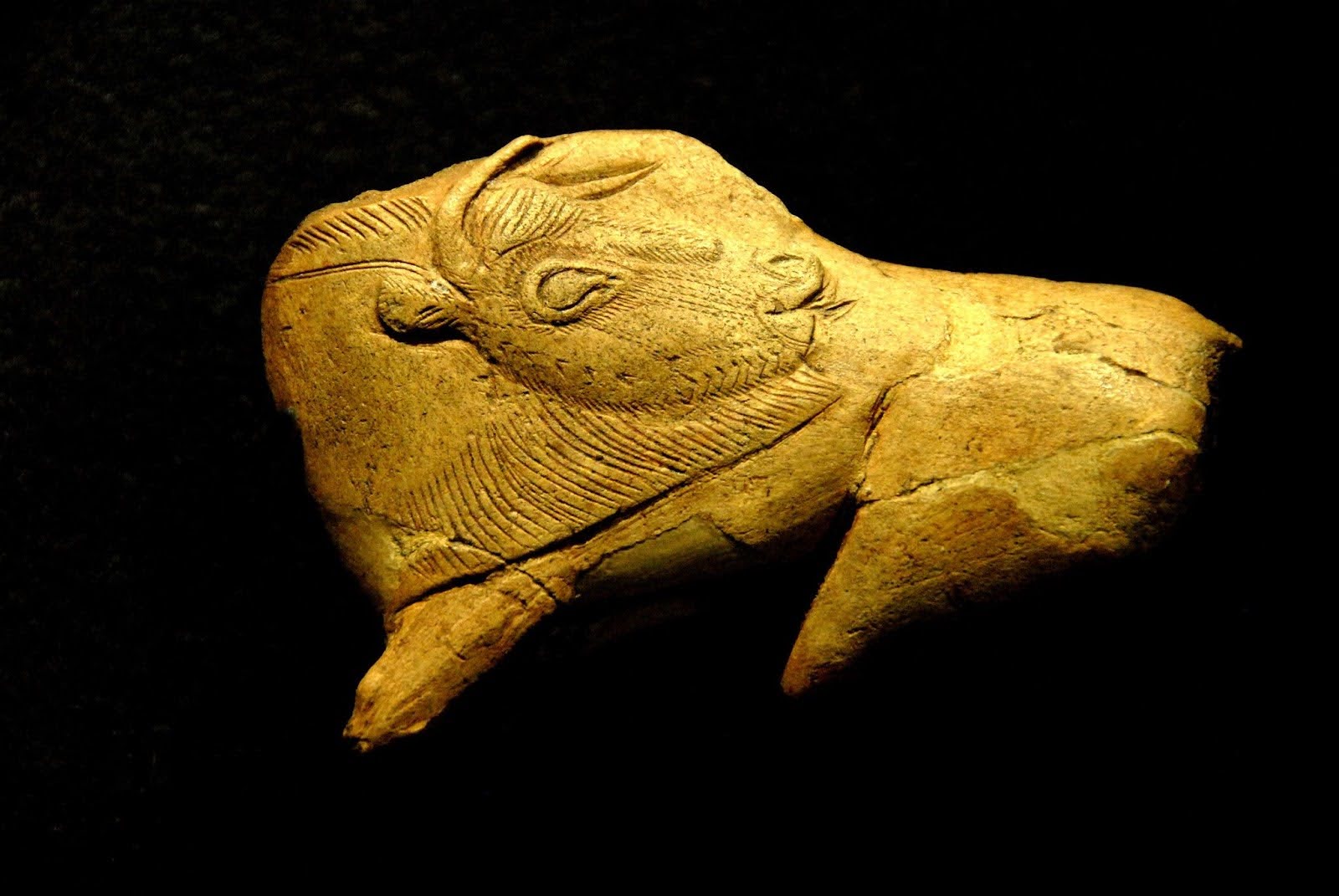
5. Arrow | Rhinos at Chauvet Cave
The slow growl of the bass feels like a display of brutish power, on ‘Arrow’.
Rhinos are some of the more fearsome beasts depicted in the Chauvet Cave, in southern France. Carbon dating tells us the cave was used by humans during two separate periods: the Aurignacian and the Gravettian. Most of the paintings date to the earlier, Aurignacian, era (32,000 to 30,000 years ago). The later Gravettian occupation, which occurred 27,000 to 25,000 years ago, left little but a child’s footprints, the charred remains of ancient hearths, and carbon smoke stains from torches that lit the caves.

6. Wool | Reclining Mouflon
Wool long enough for spinning made its appearance around 6,000 BC in ancient Mesopotamia. Now it can be used to make wonderfully crunchy sounding music, too.
The mouflon is a species of wild sheep, thought to be the common ancestor of all modern domestic sheep breeds. The hearty marble sculpture Reclining Mouflon was discovered in the Indus Valley, and dates back to 26,000-19,000 BC (ok, we know that’s the bronze age, but it’s a nice sculpture).

7. Obertone | Neanderthal Flute
A fictional, or long lost instrument, the ‘Obertone’ was a flute carved from horse bone, capable of playing two notes simultaneously.
The oldest musical instrument in the world is the Neanderthal Flute, discovered in Divje babe cave near Cerkno, Slovenia. Last tooted around 60,000 years ago, the flute is whittled from a young cave bear’s thigh bone, and features four pierced holes for making groovy tunes.
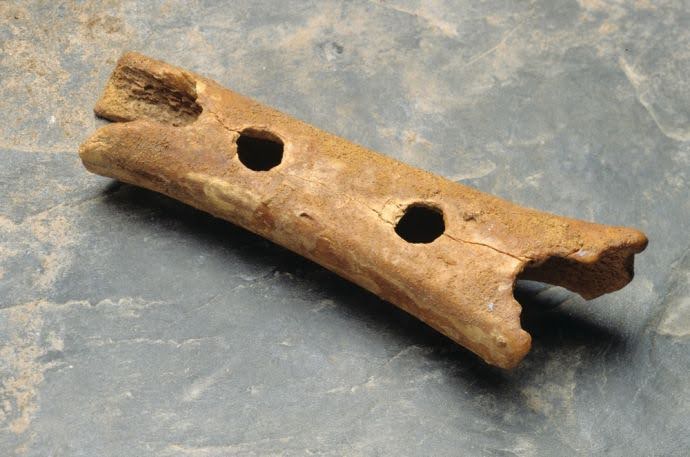
8. Rhythm Sponge | The Adam of Macedonia
On first listen, ‘Rhythm Sponge’ sounds like an archival recording of a steam engine. Take a deeper listen, and the sawing, tunnelled vision of Martina’s guitar makes an appearance.
The Adam of Macedonia is a neolithic sculpture discovered by the archaeologist Milos Bilbija, of the Skopje City Museum, where it now resides. More than 7,000 years old, the sculpture depicts a sitting male body, showing details of the spine, ribs, navel, and an erect phallus.
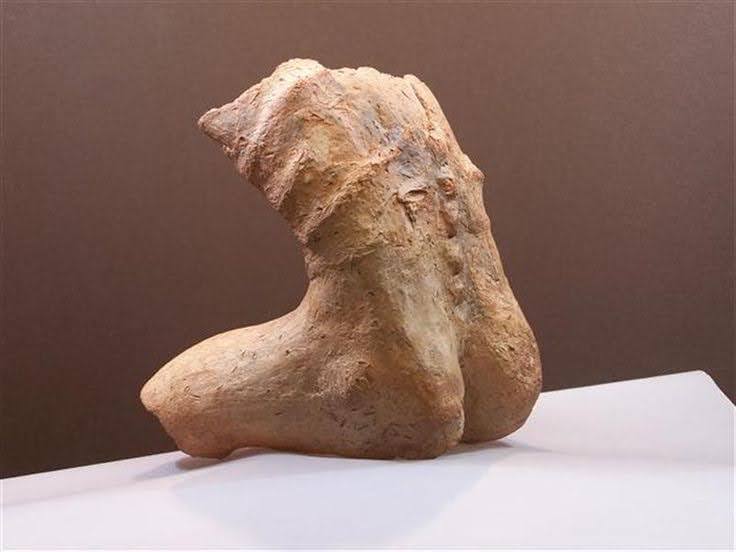
9. Sprinkler | The Dagenham Idol
Beautifully dubbed out plumbing malfunctions show yet another side to Martina’s practice, on ‘Sprinkler’.
The Dagenham Idol is perhaps the most frightening piece of stone age art on this list. Discovered in the marshy banks of the river Thames, in East London, it is the earliest representation of the human form discovered in England.
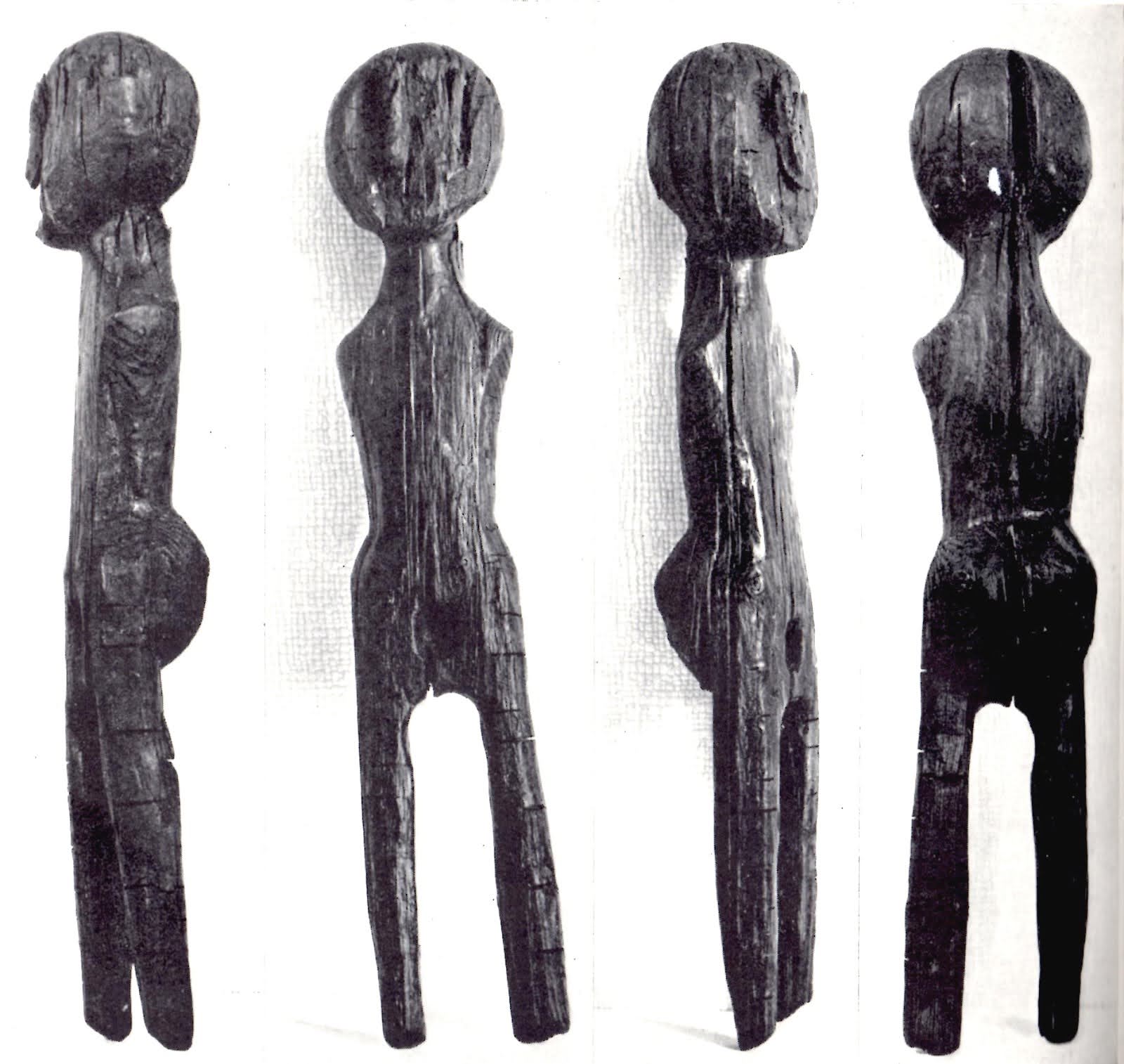
10. Silverneck | The Swimming Reindeer
The creaking tones of Silverneck tease a cacophonous drop that never arrives.
The Swimming Reindeer is a 13,000-year-old Magdalenian sculpture of two swimming reindeer, carved from the tip of a mammoth tusk. The sculpture was found in two pieces in 1866, but it was not until 1904 that the two pieces were joined to form a single artwork. The reindeer are depicted swimming nose-to-tail.
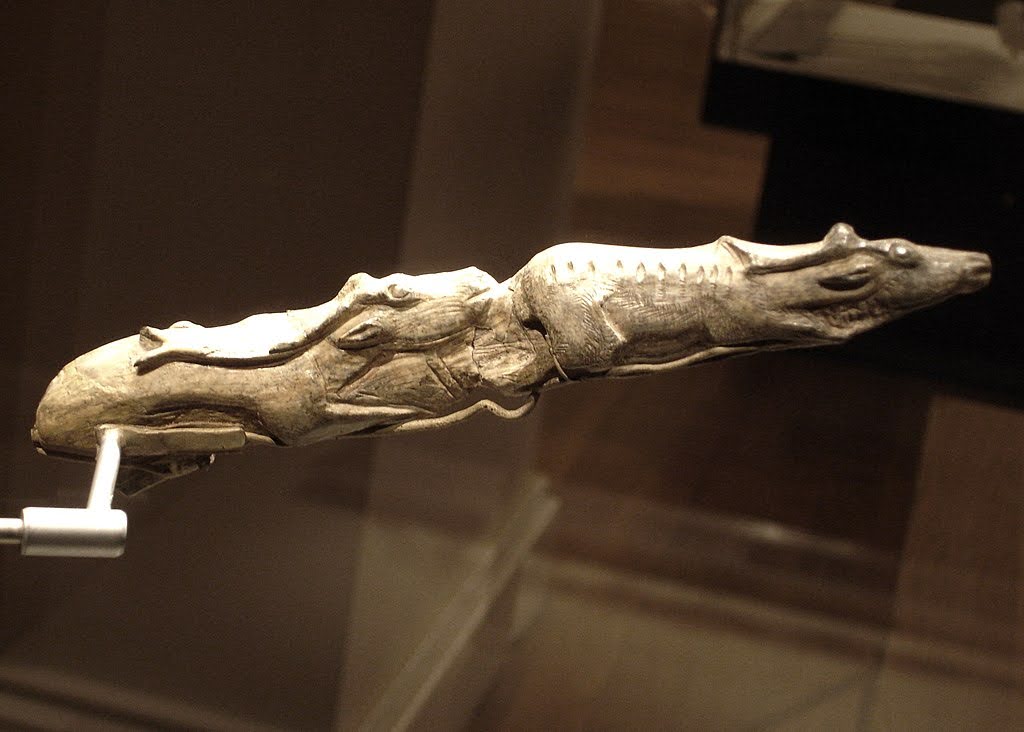
11. Pinsel | The Shigir Idol
Levitating melodies return on ‘Pinsel’, tunes communicated through a wash of ghostly interference.
The Shigir Idol is thought to be the oldest example of a wooden sculpture in the world. Discovered in a peat bog in Shigir, on the eastern slope of the Middle Urals, in Russia, it once stood over five meters tall, and is twice the age of Egypt’s great pyramid (12,000 years old).
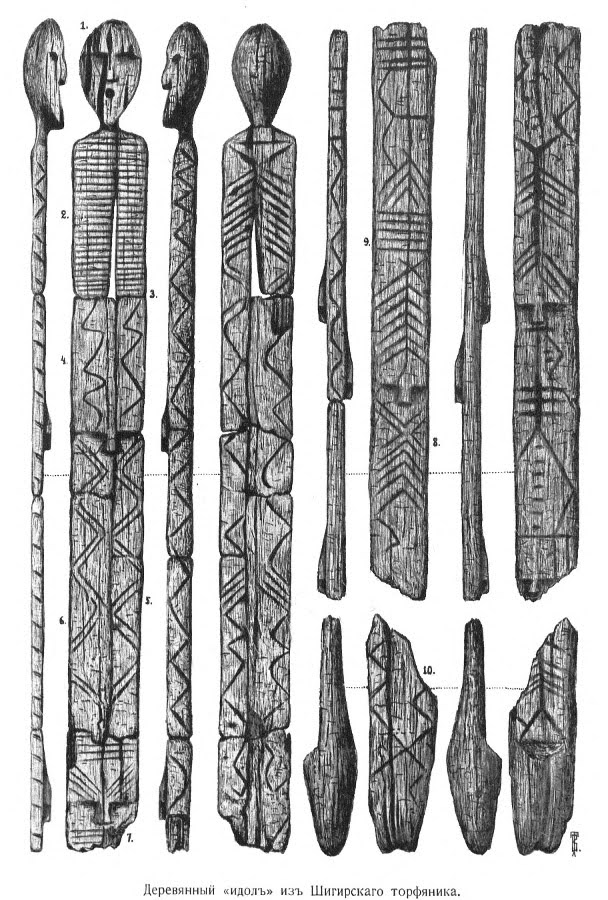
12. Mini Gong | The Westfray Wife
What better way to signal the album’s end, than by striking a (miniature) gong? Quite how Martina strikes said gong, I’m not sure – but I don’t think I’ve heard anything like it.
The Westray Wife is a small Neolithic figurine, 4 centimetres in height, carved from sandstone. It was discovered in the summer of 2009, and is the first Neolithic carving of a human form to have been found in Scotland.
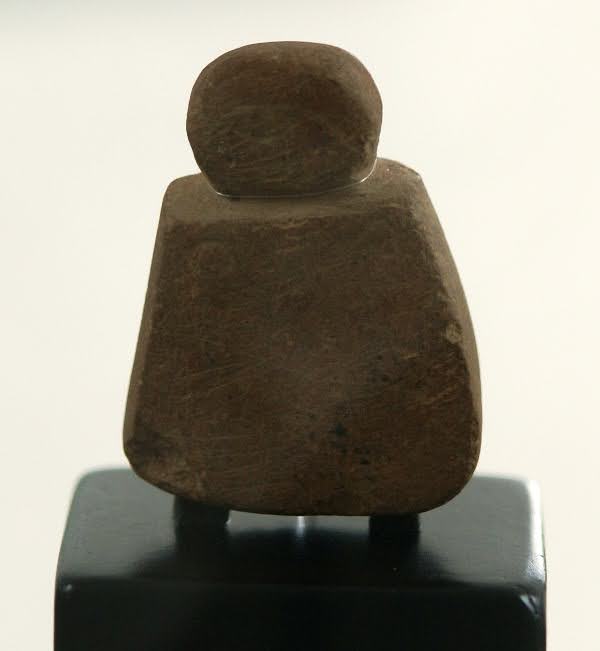


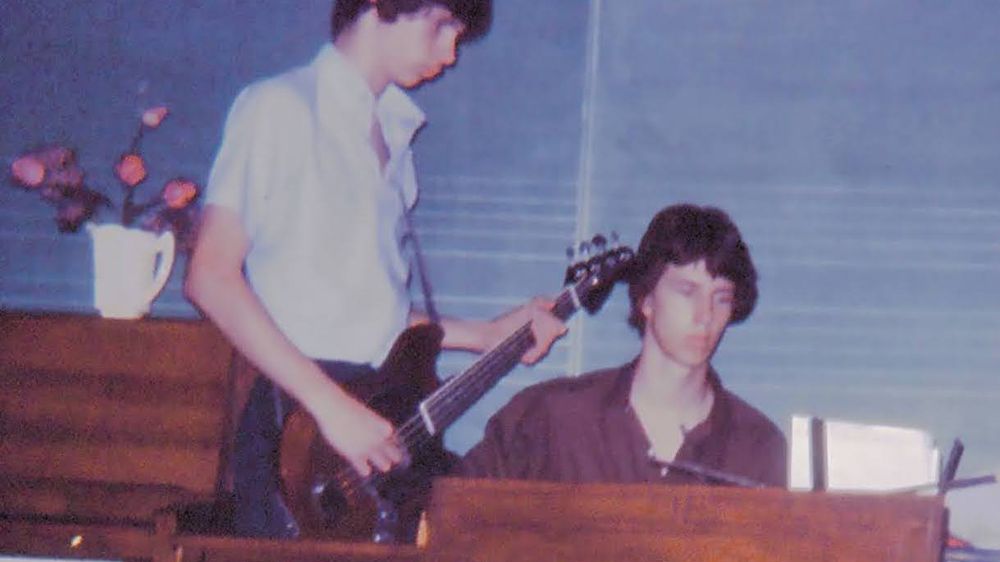
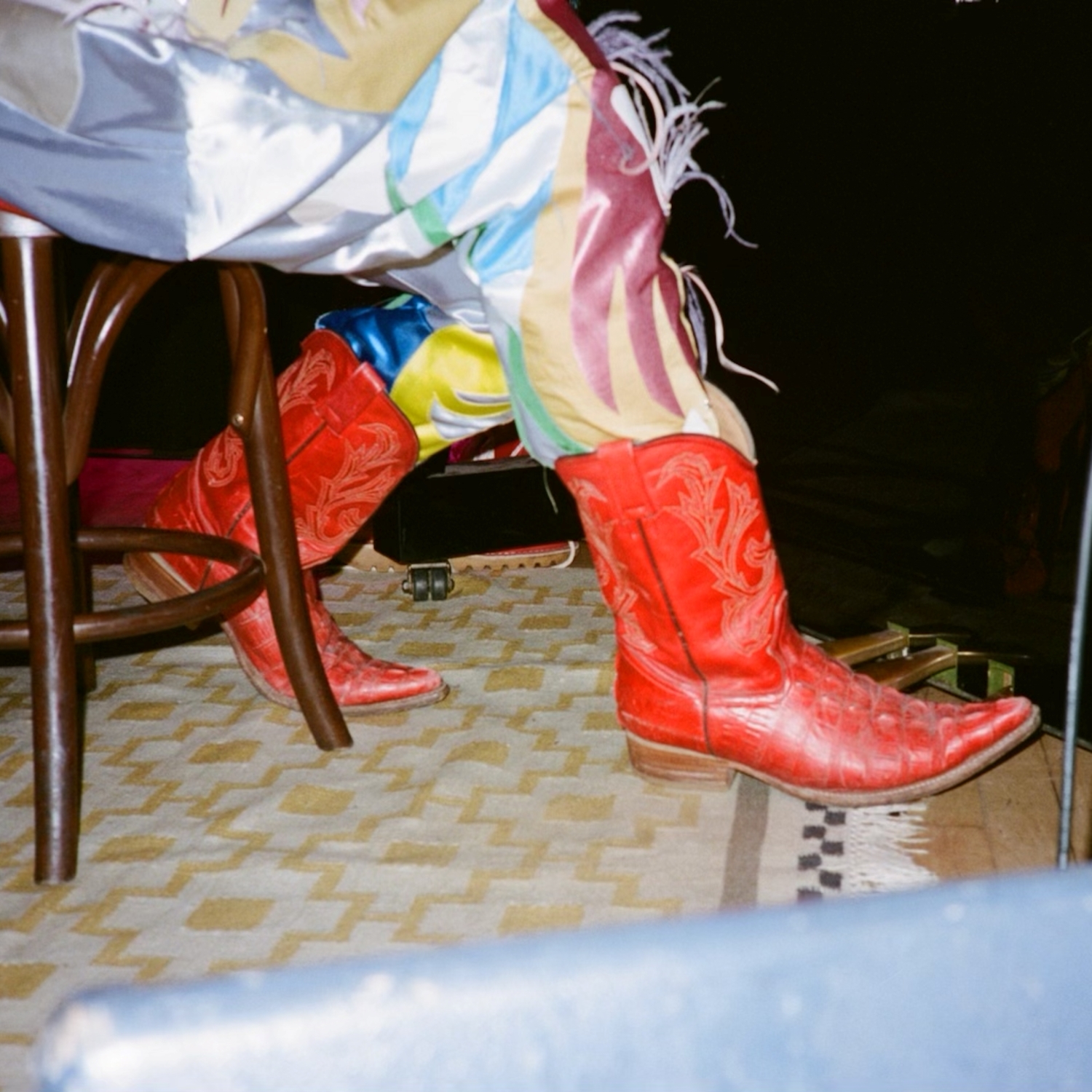












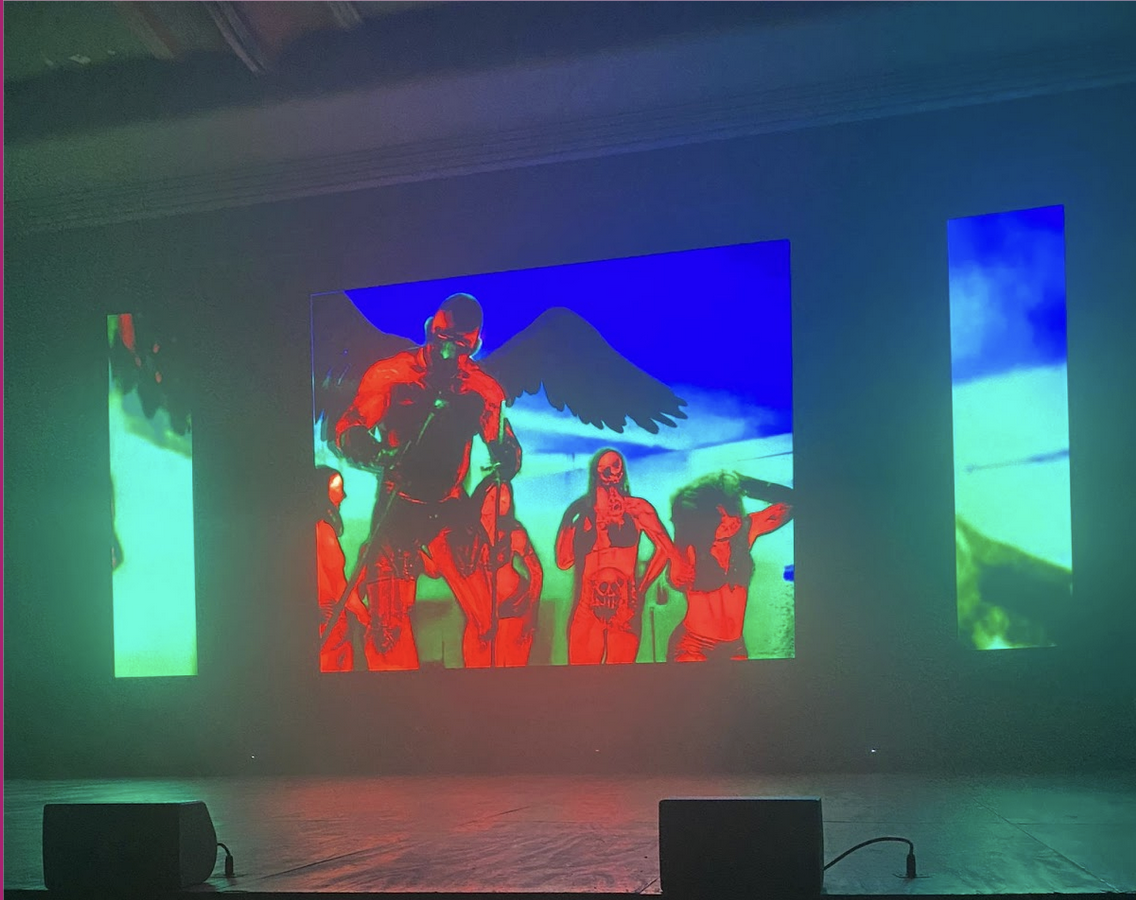



Must Reads
David Holmes – Humanity As An Act Of Resistance in three chapters
As a nation, the Irish have always had a profound relationship with the people of Palestine
Rotterdam – A City which Bounces Back
The Dutch city is in a state of constant revival
Going Remote.
Home swapping as a lifestyle choice
Trending track
Vels d’Èter
Glass Isle
Shop NowDreaming
Timothy Clerkin
Shop Now